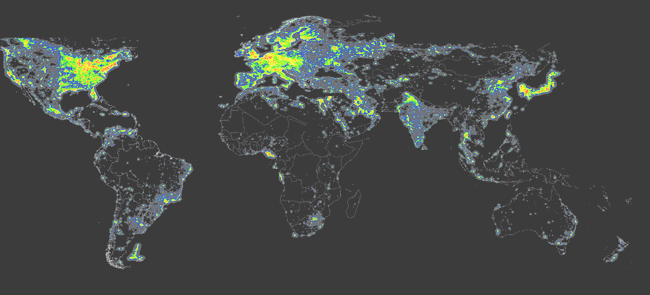Explanation: Where have all the dim stars gone? From many places on the Earth including major cities, the night sky has been reduced from a fascinating display of hundreds of stars to a diffuse glow through which only a handful of stars are visible. The above map indicates the relative amount of light pollution that occurs across the Earth. The cause of the pollution is artificial light reflecting reflect off of molecules and aerosols in the atmosphere. Parts of the Eastern United States and Western Europe colored red have an artificial night sky glow over nine times that of the natural sky. In any area marked orange or red, the central band of our Milky Way Galaxy is no longer visible. The International Dark Sky Association suggests common types of fixtures that provide relatively little amounts of light pollution.
1999 2000 2001 2002 2003 2004 2005 2006 2007 2008 2009 2010 2011 2012 2013 2014 2015 2016 2017 2018 2019 2020 2021 2022 2023 2024 2025 |
Yanvar' Fevral' Mart Aprel' Mai Iyun' Iyul' Avgust Sentyabr' Oktyabr' Noyabr' Dekabr' |
NASA Web Site Statements, Warnings, and Disclaimers
NASA Official: Jay Norris. Specific rights apply.
A service of: LHEA at NASA / GSFC
& Michigan Tech. U.
|
Publikacii s klyuchevymi slovami:
zasvetka - Zemlya - nochnoe nebo - Earth - light pollution
Publikacii so slovami: zasvetka - Zemlya - nochnoe nebo - Earth - light pollution | |
Sm. takzhe:
Vse publikacii na tu zhe temu >> | |
